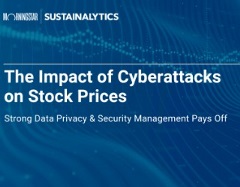The Corporate Sustainability Due Diligence Directive: A Step Towards Stronger Human Rights and Environmental Practice
In this overview, discover the key elements of the Corporate Sustainability Due Diligence Directive and what this EU regulation means for addressing social and environmental issues supply chains.
Child Labor in Cocoa Supply Chains: Unveiling the Layers of Human Rights Challenges
Child labor remains a persistent issue in the cocoa supply chain. So can major food brands do to stop it? Discover the steps companies can take to address the issue and ways investors can engage with companies to mitigate it.
Constructing Zero Deforestation Portfolios to Combat Climate Change and Biodiversity Loss
The world’s forests are under threat, putting ecosystem services and global economic wealth in danger. But investors can help to fight deforestation. In this article, learn the reasons why investors should pursue zero deforestation portfolios.
The Raw Materials Crunch: Industry Risks Due to Physical Scarcity, Supply Concentration and Intense Demand
As demand for critical raw materials increases, due in part to the low-carbon transition, industries reliant on those materials face growing risks. In this article, discover what’s driving those risks.
Policy Responses to Climate Change: The EU’s Fit for 55 Package and Its Implications for Companies and Investors
Governments need to be more decisive to slow global temperature rise. The EU’s Fit for 55 package, with its ambitious targets for energy-intensive sectors, is an example of the required policy response needed to decarbonize global economies.
Green Bond Principles: What Issuers Need to Know
The green bond market is a portion of the larger debt market that enables and mobilizes funding for projects that contribute to environmental sustainability. Green bonds facilitate capital raising and investments for new and existing projects which have environmental benefits and can mitigate risks associated with climate change.
Capturing the Direct and Indirect Risks of Physical Climate Change in Investment Portfolios
Investors face a unique set of challenges in assessing the physical climate risks affecting their portfolio companies. In this blog discover the direct and indirect physical climate risks impacting companies and their supply chains.
A New Tool at the Table: Understanding Low Carbon Transition Risk By Industry and How Companies Are Managing It
Discover how leading companies are managing their low carbon transition risks. Using data from the Low Carbon Transition Ratings, we identify the industries with a large portion of the companies with strong management of transition issues and examine the factors contributing to their strong management scores.
Physical Climate Risk: Preparing Your Portfolio for a Changing Climate
The physical climate risks affecting assets are likely to increase in the coming years, as the impacts of climate change are felt more frequently and with more intensity. In this guide, learn how companies and investors can assess their exposure to physical climate risks.
The Impact of Cyberattacks on Stock Prices
Data privacy and cybersecurity-related issues have become major drivers of business risk in recent years. Based on Morningstar Sustainalytics’ Data Privacy and Security (DP&S) incident data, this report reviews recent DP&S incident trends and assesses the impact of significant cyberattack Incidents on stock returns over time.




















